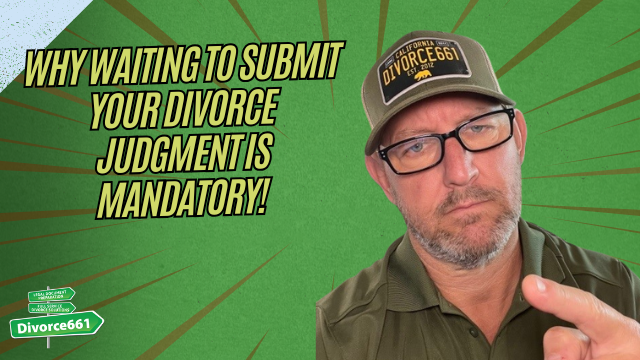How to Appeal a Divorce Judgment in California
Can I appeal my divorce judgment?
If your divorce judgment left you feeling blindsided, that feeling alone is not enough to win an appeal. Appeals are not a second chance to argue that the outcome was unfair. Instead, an appeal challenges legal errors made by the trial court. If the judge misapplied the law or made a clear mistake in calculation, there may be grounds to appeal. If the problem is simply an emotional disagreement with the result, an appeal will almost certainly fail.
Appeals focus on legal errors, not emotional grievances.
The critical deadline: 60 days in California
In California you have 60 days from the date the judgment is entered to file a notice of appeal. This deadline is strict. If you think an appeal might be necessary, act quickly. Missing the 60 day window will usually eliminate the option to appeal.
What do appellate courts actually review?
Appellate courts do not retry your case. They review the record to determine whether legal error occurred. Common issues that may justify an appeal include:
- Misapplication of statutes or legal principles
- Clear miscalculation of child support or spousal support
- Procedural errors that deprived a party of a fair hearing
- An abuse of discretion by the trial judge when the law sets limits on the judge’s choices
Appellate courts evaluate different issues under different standards. Legal questions are often reviewed de novo. Discretionary decisions are reviewed for abuse of discretion. Findings of fact are reviewed for substantial evidence. Because these standards matter, a specialist appellate attorney is the best person to assess whether an issue is appealable.
How to decide whether to appeal
Before filing an appeal, take these steps:
- Confirm the entry date of the judgment so you know the 60 day deadline.
- Gather the record: the judgment, minute orders, financial declarations, and trial transcripts if available.
- Identify the specific legal error you believe occurred. Avoid vague claims like that the result is unfair.
- Consult an appellate attorney to evaluate the strength of the issue and advise on procedure and likely costs.
Getting a second set of eyes early can save thousands of dollars and a lot of stress. Sometimes a careful review shows that the original decision was legally correct, and an appeal is unnecessary.
A real example
We once worked with someone who believed their spousal support order had been miscalculated. Instead of immediately filing an appeal, we reviewed the math and the supporting documents. The numbers were correct. By confirming that the order was accurate, the client avoided the time, expense, and frustration of a pointless appeal.
How I can help
I offer an honest review of divorce judgments and will help determine whether an appeal is a realistic option. If your case has merit for appeal, I can refer you to experienced appellate counsel. If an appeal is not warranted, I will tell you so and explain why. The goal is to empower you to make an informed decision and avoid unnecessary legal expenses.
Next steps
If you are considering an appeal or simply want a professional review of your judgment, schedule a free consultation. Visit Divorce661.com for a free case review and referral to appellate attorneys when appropriate. Acting quickly preserves your rights and gives you the best chance to move forward confidently.
Remember
- An appeal must focus on legal errors, not just dissatisfaction.
- The 60 day deadline in California is strict.
- Consulting an appellate attorney early can save time and money.




